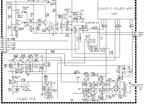T
treez
Guest

Hello,
We have one of the subwoofer amps as in the attached video. If you look at 1:39 to 1:50 you can see the white “goo” at the bottom of the big electrolytic capacitors.
On our board, this white goo has , in many places, gone dark brown and is crispy and brittle. Is this due to overheating due to a fault?
When I scraped and picked the brittle brown stuff away off the board, there was a broken axial diode that had been buried in it. It’s broken up and the centre of its body has gone and we don’t know which part to replace it with.
Ours is a Mordaunt-Short MS519 digital subwoofer, but it looks just like the one in this video.
So is the "gloop" supposed to ever be dark bronw and brittle?
see 1:39 to 1:50
https://www.youtube.com/watch?v=at4tzEIe3UY&t=315s
We have one of the subwoofer amps as in the attached video. If you look at 1:39 to 1:50 you can see the white “goo” at the bottom of the big electrolytic capacitors.
On our board, this white goo has , in many places, gone dark brown and is crispy and brittle. Is this due to overheating due to a fault?
When I scraped and picked the brittle brown stuff away off the board, there was a broken axial diode that had been buried in it. It’s broken up and the centre of its body has gone and we don’t know which part to replace it with.
Ours is a Mordaunt-Short MS519 digital subwoofer, but it looks just like the one in this video.
So is the "gloop" supposed to ever be dark bronw and brittle?
see 1:39 to 1:50
https://www.youtube.com/watch?v=at4tzEIe3UY&t=315s

